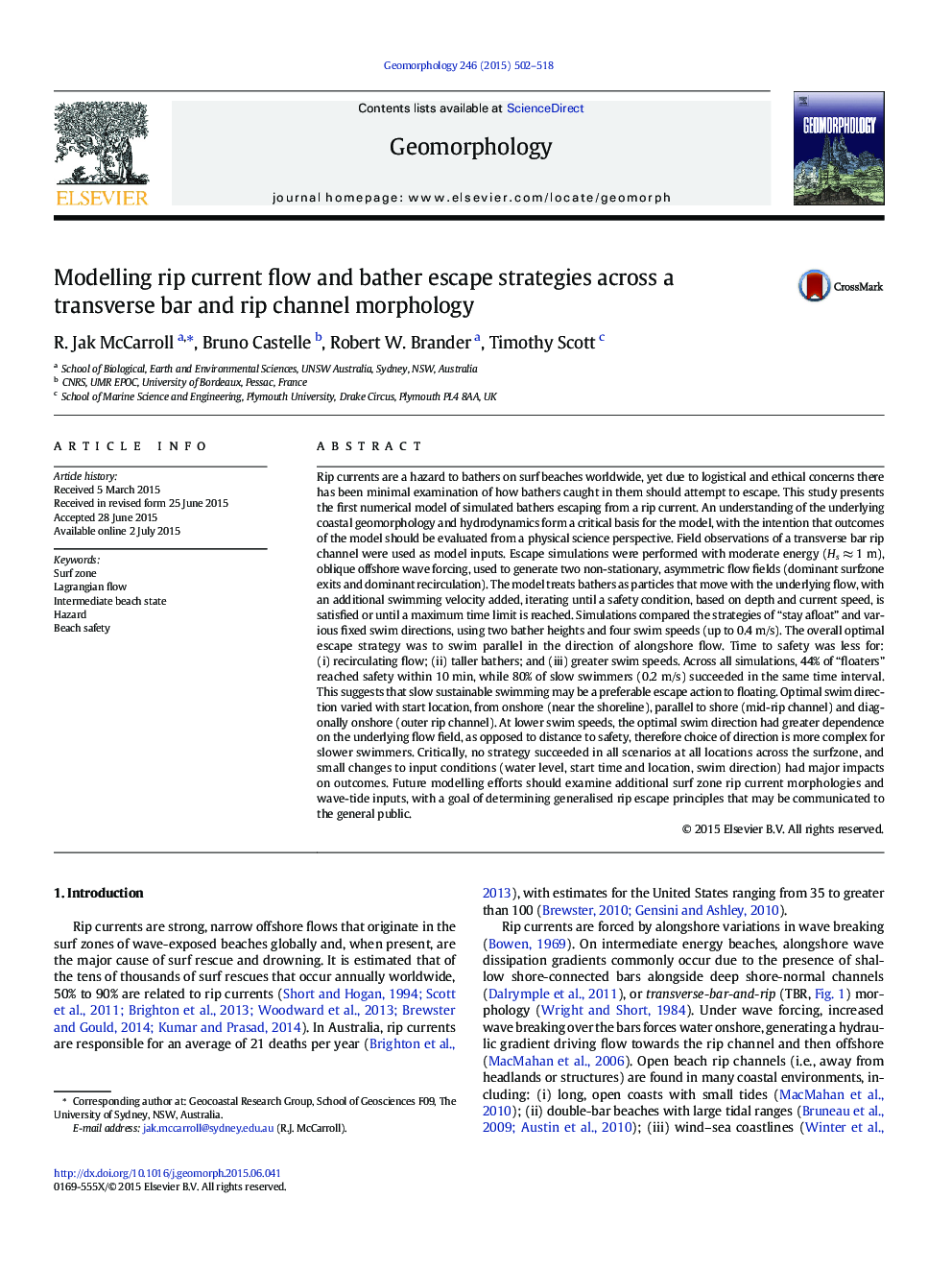| کد مقاله | کد نشریه | سال انتشار | مقاله انگلیسی | نسخه تمام متن |
|---|---|---|---|---|
| 6431987 | 1635403 | 2015 | 17 صفحه PDF | دانلود رایگان |

- First numerical model to simulate human bathers attempting to escape rip currents
- Underlying non-stationary flow with two behaviours: surfzone exit and recirculation
- Simulated bathers attempt to float or swim at various speeds to escape rip.
- Optimal escape strategy is to swim parallel in the direction of alongshore flow.
- All strategies fail in some scenarios, outcomes are highly sensitive to inputs.
Rip currents are a hazard to bathers on surf beaches worldwide, yet due to logistical and ethical concerns there has been minimal examination of how bathers caught in them should attempt to escape. This study presents the first numerical model of simulated bathers escaping from a rip current. An understanding of the underlying coastal geomorphology and hydrodynamics form a critical basis for the model, with the intention that outcomes of the model should be evaluated from a physical science perspective. Field observations of a transverse bar rip channel were used as model inputs. Escape simulations were performed with moderate energy (Hs â 1 m), oblique offshore wave forcing, used to generate two non-stationary, asymmetric flow fields (dominant surfzone exits and dominant recirculation). The model treats bathers as particles that move with the underlying flow, with an additional swimming velocity added, iterating until a safety condition, based on depth and current speed, is satisfied or until a maximum time limit is reached. Simulations compared the strategies of “stay afloat” and various fixed swim directions, using two bather heights and four swim speeds (up to 0.4 m/s). The overall optimal escape strategy was to swim parallel in the direction of alongshore flow. Time to safety was less for: (i) recirculating flow; (ii) taller bathers; and (iii) greater swim speeds. Across all simulations, 44% of “floaters” reached safety within 10 min, while 80% of slow swimmers (0.2 m/s) succeeded in the same time interval. This suggests that slow sustainable swimming may be a preferable escape action to floating. Optimal swim direction varied with start location, from onshore (near the shoreline), parallel to shore (mid-rip channel) and diagonally onshore (outer rip channel). At lower swim speeds, the optimal swim direction had greater dependence on the underlying flow field, as opposed to distance to safety, therefore choice of direction is more complex for slower swimmers. Critically, no strategy succeeded in all scenarios at all locations across the surfzone, and small changes to input conditions (water level, start time and location, swim direction) had major impacts on outcomes. Future modelling efforts should examine additional surf zone rip current morphologies and wave-tide inputs, with a goal of determining generalised rip escape principles that may be communicated to the general public.
Journal: Geomorphology - Volume 246, 1 October 2015, Pages 502-518